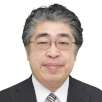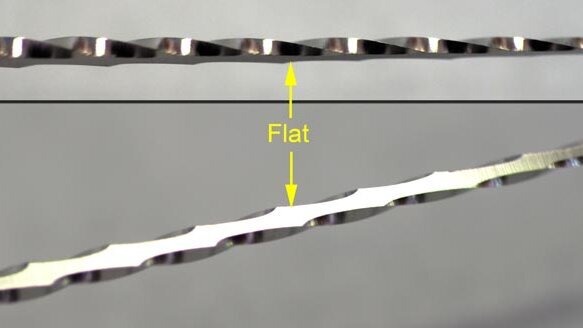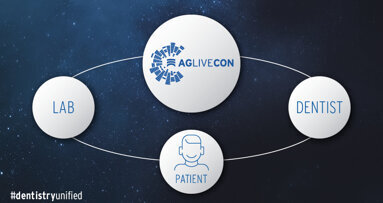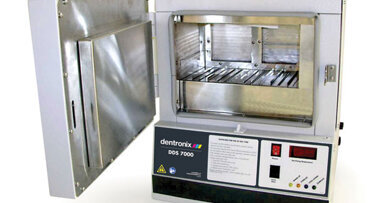Unless our language precisely describes what we want to accomplish when shaping canals, we can easily be led astray. For example, K-files, instruments designed with a large number of highly horizontal flutes (Fig. 1), are typically used with a watch-winding motion, and we correctly say that we are cutting the dentin.
However, cutting the dentin is not our goal. It is the removal of dentin that is basic to shaping, and cutting merely makes an indentation without removal.
To drive this point home, consider the action of shaving your face or legs. Hair is removed because the cutting blade is at right angles to the plane of motion, resulting in the shaving of the hair and its consequent removal. If the blade were in the same plane as the plane of motion, we would be slicing into our faces or legs. We would be cutting, but we would not be producing removable shavings.
embedImagecenter("Imagecenter_1_310",310, "large");
As long as the K-files are used with a motion that is in the same plane as the flutes, we will be cutting without removal. With this knowledge, we have a better appreciation of exactly what we want the instruments to accomplish, namely shaving dentin away rather than making indentations into the dentin without any removal of the dentin. Now obviously, K-files remove dentin from the walls of the canal, but it doesn’t occur until the instrument is pulled from the tooth. Upon the pull stroke, the blades are finally at more or less a right angle to the plane of motion and will now shave the dentin from the walls of the canal.
At best the horizontal component of motion, otherwise known as watch winding, accomplishes little more than engaging and disengaging the dentin. Not until the pull stroke is employed is dentin shaved away.
Once one understands what is going on, the K-files can rightfully be looked at as incorporating inefficient designs for what we want to accomplish. The more the flutes engage the walls of the canal, the greater the resistance to apical negotiation. One of the features of horizontal flutes is that more can be crowded into the working length (usually 16 mm), compounding the problem of increased resistance along length.
Added liabilities include the increased stiffness of the instrument as the number of flutes increase, a function that reflects the number of twists incorporated along the shank of the instrument. Given the predominant watch-winding motion, the K-file represents an instrument that engages more, shaves dentin away far less efficiently and is stiffer, producing poor tactile perception.
An instrument that is stiffer is more likely to spring back to the straight position rather than record the curve it is negotiating through, a fact that causes the K-file to selectively work against the outside wall of curved canals upon the pull stroke, leading to canal transportation in the apical third.
Until we get our nomenclature correct, substituting dentinal shavings for cutting, we will tend to confuse just what we want from the instruments we use. Once we understand what we want to accomplish, we immediately understand why the design and utilization of K-files defeat our goals for efficient undistorted shaping. We also understand why reamers both unrelieved (Fig. 2) and relieved with fewer more vertically oriented flutes fulfil our more accurate definition of what we want instruments to accomplish.
Unlike the K-files, the more vertically oriented flutes used with the same watch-winding motion will now not only cut dentin but shave it away. Where the K-files incorporate a design that leads to a viscous cycle of increasing engagement and resistance along length, the reamers are immediately and constantly removing dentinal shavings in a virtuous cycle.
To begin with, the reamers have significantly less engagement along length than the K-files, but immediately upon employing a watch-winding motion the vertically oriented blades (Fig. 3) are removing dentin. As the instruments travel apically, the dentin is continuously being shaved away, compensating for the deeper penetration.
Using more flexible instruments that cut more effectively keeps the instruments more centered in the canal on the down stroke. On the upstroke where the K-files are designed to work against the outer wall, the relieved reamers’ increased flexibility combined with the vertically oriented flutes makes them poor shavers of dentin against all the walls of the canal and the outer walls of curved canals in particular, reducing the potential for canal distortion in the apical third.
Watch-winding, whether used correctly with reamers or incorrectly applied with K-files, has the benefit of reducing the arc of motion to a point where torsional stress and cyclic fatigue are generally not issues that lead to instrument separation.
With the incorporation of rotary NiTi, both torsional stress and cyclic fatigue become factors that can lead to instrument separation. With separation directly related to greater canal curvature, and the increasing tip size and taper of the rotary NiTi instruments, the dentist is motivated to limit the canal preparation to dimensions that are likely to lead to inadequate irrigation and obturation.
Another way to look at cutting and shaving is to understand that cutting is always a component of shaving, but shaving is not necessarily a component of cutting unless the blades are at right angles to the plane of motion. With this understanding, a lot of the confusion that surrounds the term “cutting” is removed. What we should get from this discussion is that cutting is insufficient to accomplish our goals and we should concentrate on those techniques that emphasize shaving that results in shaping (Figs. 4–6).
From a point of view of the larger picture, schools would encourage the understanding of important endodontic mechanical concepts if they adopt language that clearly and accurately reflects what we want to accomplish. Teaching via indoctrination rather than critical thinking makes for muddled imagery that can take us off into useless tangents that result in uninformed decision-making that is ultimately bad for the dentist and his or her patients.
About the author
Barry Lee Musikant, DMD, is a partner in the largest endodontic practice in Manhattan, Musikant’s 35-plus years of practice experience have established him as one of the top authorities in endodontics.
Editorial note: This article was originally published in Endo Tribune Vol. 6 No. 5, May 2011.
Roydent Dental Products is reporting steady sales growth for its Endo-Extractor System, most notably since discontinuance of one of its main competitors. ...
A newly developed system for endodontic cleaning and disinfection — GentleWave — utilizes broad-spectrum acoustic energy to remove all pulp ...
Every ortho practice should have clear and challenging performance goals. This is the first step in improving the practice and reaching the office’s ...
While the quality of endodontic instrumentation and obturation are generally based on our final mesio-distal X-rays, we must not believe for a moment that ...
Samuel O. Dorn, DDS, received the American Association of Endodontists’ highest honor, the Edgar D. Coolidge Award, given for leadership and exemplary...
Digitization can bring dental technicians and dentists closer together. How new opportunities arising from this interdisciplinary approach can be used best ...
Patient after patient, hour after hour, day after day hygienists can be heard delivering oral hygiene instruction (OHI) to their patients. This task has the...
CLOVIS, Calif., USA: To help perfect running the engine of an endo business and form the foundation for a successful practice — from patient experience to...
There’s a new vision in dentistry that is gradually being recognized and is referred to as the endo-implant algorithm. This new approach considers the...
It’s been well over a year ago that I had the privilege of having an article published in the Journal of Clinical Orthodontics (September 2012). The ...
Live webinar
Mon. 22 December 2025
1:00 PM EST (New York)
Live webinar
Mon. 12 January 2026
9:00 AM EST (New York)
Prof. Judith Jones D.D.S; M.P.H., Prof. Kakuhiro Fukai D.D.S., Ph.D, Dr. Bathsheba (Bethy) Turton
Live webinar
Wed. 14 January 2026
12:00 PM EST (New York)
Dr. Théo Laplane, Dr. Robert Gottlander DDS
Live webinar
Fri. 16 January 2026
12:00 PM EST (New York)
Live webinar
Mon. 19 January 2026
1:00 PM EST (New York)
Philipp Kopp, Michael Seeber
Live webinar
Thu. 22 January 2026
2:00 PM EST (New York)
Dr. Nicola M. Grande DDS, PhD
Live webinar
Wed. 28 January 2026
8:00 AM EST (New York)



 Austria / Österreich
Austria / Österreich
 Bosnia and Herzegovina / Босна и Херцеговина
Bosnia and Herzegovina / Босна и Херцеговина
 Bulgaria / България
Bulgaria / България
 Croatia / Hrvatska
Croatia / Hrvatska
 Czech Republic & Slovakia / Česká republika & Slovensko
Czech Republic & Slovakia / Česká republika & Slovensko
 France / France
France / France
 Germany / Deutschland
Germany / Deutschland
 Greece / ΕΛΛΑΔΑ
Greece / ΕΛΛΑΔΑ
 Hungary / Hungary
Hungary / Hungary
 Italy / Italia
Italy / Italia
 Netherlands / Nederland
Netherlands / Nederland
 Nordic / Nordic
Nordic / Nordic
 Poland / Polska
Poland / Polska
 Portugal / Portugal
Portugal / Portugal
 Romania & Moldova / România & Moldova
Romania & Moldova / România & Moldova
 Slovenia / Slovenija
Slovenia / Slovenija
 Serbia & Montenegro / Србија и Црна Гора
Serbia & Montenegro / Србија и Црна Гора
 Spain / España
Spain / España
 Switzerland / Schweiz
Switzerland / Schweiz
 Turkey / Türkiye
Turkey / Türkiye
 UK & Ireland / UK & Ireland
UK & Ireland / UK & Ireland
 International / International
International / International
 Brazil / Brasil
Brazil / Brasil
 Canada / Canada
Canada / Canada
 Latin America / Latinoamérica
Latin America / Latinoamérica
 China / 中国
China / 中国
 India / भारत गणराज्य
India / भारत गणराज्य
 Pakistan / Pākistān
Pakistan / Pākistān
 Vietnam / Việt Nam
Vietnam / Việt Nam
 ASEAN / ASEAN
ASEAN / ASEAN
 Israel / מְדִינַת יִשְׂרָאֵל
Israel / מְדִינַת יִשְׂרָאֵל
 Algeria, Morocco & Tunisia / الجزائر والمغرب وتونس
Algeria, Morocco & Tunisia / الجزائر والمغرب وتونس
 Middle East / Middle East
Middle East / Middle East




























































To post a reply please login or register